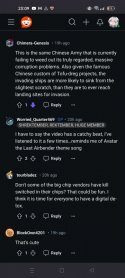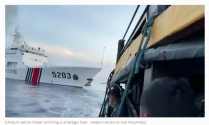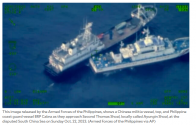Just a slight add-on:
In fact, in the future, nuclear-powered submarine technological pathways may develop towards eventually converging into the aformentioned state in bolded form, such that one of the only few remaining features that allow us to distingush SSNs from SSBNs/SSGNs would be the number of multipack VLS tubes equipped per boat (e.g. 6-10 for SSN, 12-16 for SSBN/SSGN).
Needless to say, this greatly helps in the simplification and streamlining of the planning and execution of procurement and operational doctrines and strategies for the PLAN, as China is currently in the process of massively expanding and upgrading her underwater fleet.
The US aims to raise the annual production rate of its Virginia SSNs to ~2.3 boats per year by 2028. Across the pond, however - Once its expanded workforce and facilities are finally in place, Huludao can easily achieve double that rate (~4.6 boats per year) at least.
Of course, I'm no expert in this field. I'm merely explaning and inferring from what I have came across regarding China's underwater nuclear fleet development from the past couple months and years.
Correction made to avoid confusion.
Besides, given how SSNs are growing in size as they got more advanced and more capable - We may be reaching a point sometime in the future where it would be more cost-effective and effort-effective for SSNs and SSBNs to share a largely similar hull design. And given that the multipack VLS tubes have pretty much similar dimensions as a typical SLBM - Any SSBNs can have their role swapped between that of the SSBN and the SSGN by simply swapping the SLBMs with multipack VLS tubes (and vice versa), instead of having to go through a lengthy SSGN-conversion process like the first 4 Ohio boats did.
In fact, in the future, nuclear-powered submarine technological pathways may develop towards eventually converging into the aformentioned state in bolded form, such that one of the only few remaining features that allow us to distingush SSNs from SSBNs/SSGNs would be the number of multipack VLS tubes equipped per boat (e.g. 6-10 for SSN, 12-16 for SSBN/SSGN).
Needless to say, this greatly helps in the simplification and streamlining of the planning and execution of procurement and operational doctrines and strategies for the PLAN, as China is currently in the process of massively expanding and upgrading her underwater fleet.
The US aims to raise the annual production rate of its Virginia SSNs to ~2.3 boats per year by 2028. Across the pond, however - Once its expanded workforce and facilities are finally in place, Huludao can easily achieve double that rate (~4.6 boats per year) at least.
Of course, I'm no expert in this field. I'm merely explaning and inferring from what I have came across regarding China's underwater nuclear fleet development from the past couple months and years.
... All while avoiding the political and financial minefields of having to establish and maintain these (land-based) weapon systems and the manpower that operates them on foreign soil.
Correction made to avoid confusion.
Last edited:



